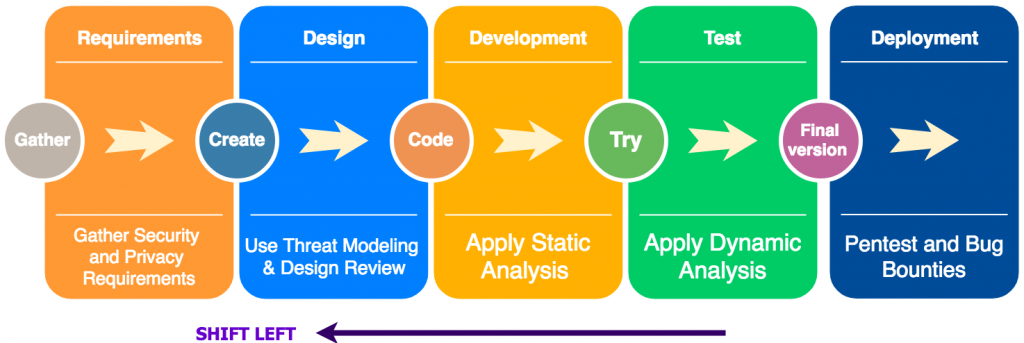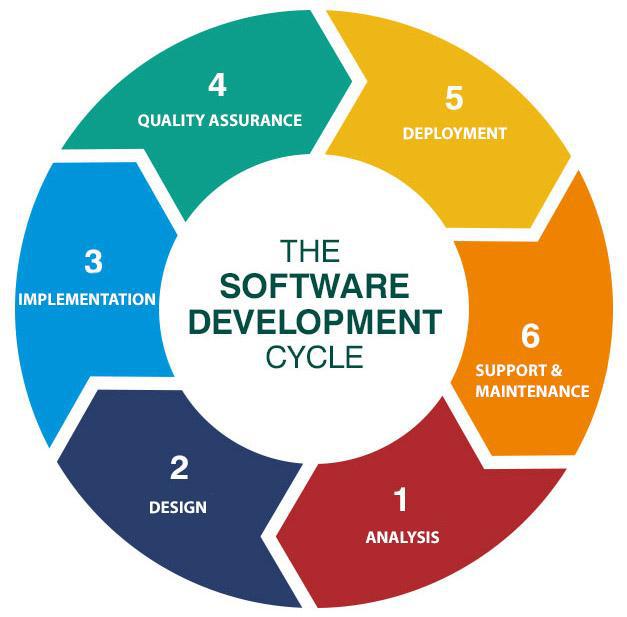Security as Code and Its Benefits
Security as Code is a set of resources that DevOps professionals use as tools to protect and secure the entire process of software development life cycle (SDLC)
Code Security has become an interesting trend as DevOps are pretty popular among operating enterprises.
Security as Code symbolizes DevOps’ massive evolution, which has helped to bake security into the development process and secure operating for enterprises and their customers.
You must pay attention to identify and locate the ongoing process of how changes are made to the infrastructure.
Only then can you identify the vulnerabilities and eliminate them one-by-one with the help of a code. That is why it has been Security as Code.
Security Code Meaning
Code security injects gates, security checks, and tests into the infrastructure at various vulnerable points during the development process.
This approach helps to implement security without delaying the DevOps development process.
Developers can fix bugs as they occur through automated testing on new codes while implementing security and testing without stalling the development process.
According to Alpacked, some of the best Security as Code are as follows:
- Execution of script tests.
- Feedback loop automation.
- Security testing and scanning automation.
- Monitoring function implementation.
- Executing scheduled security policy check.
Delivering Security as Code
What is A Secure Code?
Secure coding is the practice of developing software codes in a particular way that prevents the accidental introduction of vulnerabilities, and the code developed is known as a secure code.
With the growing trend of the internet and increasing cyber theft cases, the need for secure coding is more than ever before.
It is becoming mandatory for all software, regardless of whether the code is written for mobiles, personal computers, embedded devices, or servers.
Insights Into SDLC
A series of systematic operations that determine how software is to be developed is referred to as the software development lifecycle.
Given the cloud-driven economy, enterprise businesses need to go far beyond transforming their basic infrastructure with readymade solutions.
Security code definition also implies that these enterprises must be aware of SDLC to be the backbone of a company’s operations.
In such business environments, the DevOps approach is vital for the effectiveness of operations and overall efficiency.
The SDLC consists of 6 major stages, which are as follows:
- Requirement Analysis
It is one of the initial stages, where stakeholders and team leaders from various departments co-operate to evaluate software engineering issues.
They also need to find a resolution for the same as quickly as possible.
- Feasibility Study
The next step is a feasibility study conducted to verify each requirement’s reward and risk.
In this phase, experts determine whether a requirement is economically feasible, practical, legally compliant, and viable of a timeline viewpoint.
- Design and Architecture
Senior developers document the architecture in this designing stage and forward them to stakeholders for review.
Once the architecture is approved and declared schematic, the development can start.
- Development
Now, software development begins. A group of developers applies the architecture following the coding activities and other assigned features.
In this phase, a developer works independently to create a code before merging it with other teammates.
- Testing
When the coding is over, a team of developers is appointed to test the software features. They evaluate the code to identify bugs, optimization, and effectiveness in this testing phase.
- Deployment
The final stage, deployment, is where features are moved from the development zone to the actual interface, accessible by all users.
The main objective of DevOps is to deploy the latest features as quickly and accurately as possible.
Six Phases of SDLC
Impacts of Continuous Integration
Since DevOps emphasize continuous deliverability, continuous integration becomes a key factor to support the development and ensures smooth progress.
The implementation of code into the development process to better optimize it is known as continuous integration.
For example, injecting a code for automated screening, testing, and feedback loop initiation into a newly written code and other developers. These processes define security code.
Continuous Integration
Security as Code to Secure the SDLC
Safeguarding your SDLC with Security as Code marks a cultural shift in enterprise businesses that focus on security requirements. It further encourages them to automate security into the SDLC.
Codify security requirements in the initial stages
Security as Code requires stakeholders and DevOps team leadership to collaborate for planning on security.
The process must be systematic and include a codified set of practices that are supposed to be deployed throughout the SDLC.
Security assessment by creating user stories
User stories are an effective practice that motivates high and back-end developers to review requirements and features from a customer point of view.
Creating user stories ensures that all the essential features are addressed carefully.
Make sure code is prepared for continuous delivery
Since the development process and infrastructure use automated security, security checks and tests can be conducted early.
It often allows software projects to achieve the requirements of continuous delivery.
Scheduled Compliance Checks Automation
Besides automating security scans, implementing compliance tests must ensure the development operations meet legal standards while following best security practices.
Accomplish security checks in the testing environment
Once the product is handed over to the testing team, most security and compliance are taken care of via automation throughout the SDLC.
Teams of developers work together to fine-tune the application compliance and security and enhance its optimization using resources and tools.


